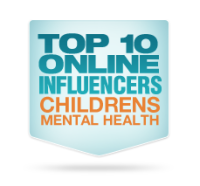 In Part Four of our blog series…Dissecting the DSM-5…What it Means for Kids and Families we’ll look at the diagnostic criteria for Bipolar Disorder-and how our understanding of the illness has changed since the last revision of the DSM.
In Part Four of our blog series…Dissecting the DSM-5…What it Means for Kids and Families we’ll look at the diagnostic criteria for Bipolar Disorder-and how our understanding of the illness has changed since the last revision of the DSM.
I’m purposely following up our discussion from last Sunday on Disruptive Mood Dysregulation Disorder (DMDD) by looking at the diagnostic criteria for bipolar disorder…because the failure to accurately apply the previous criteria for bipolar disorder provided most of the impetus for the creation of the DMDD diagnosis.
The diagnostic criteria for bipolar disorder haven’t substantially changed in the DSM-5. The criteria are listed below…
A distinct period of elevated, expansive or irritable mood and abnormally and persistently increased goal-directed activity or energy, lasting at least one week and present most of the day, nearly every day in which three or more of the following are present (four if mood is only irritable):
- Inflated self-esteem or grandiosity
- Decreased need for sleep
- More talkative, pressured speech
- Flight of ideas or racing thoughts
- Increased distractability
- Increased goal-directed activity (psychomotor agitation)
- Involvement with pleasurable behaviors with the potential for painful consequences
By definition, a person isn’t diagnosed with classic (Type I) bipolar disorder unless they have experienced at least one episode that meets the above criteria. Persons with hypomania experience mood disturbances lasting at least four days meeting the above criteria that aren’t severe enough to cause marked impairment in academic or social functioning, require hospitalization or are associated with psychotic symptoms. Persons with bipolar disorder may also experience episodes of depression (that’s where the term “manic depression” comes from), or episodes in which symptoms of mania are seen concomitantly with symptoms of depression (mixed episodes).
The most important clarification associated with bipolar disorder in the DSM-5 impacting kids is the explicit statement that episodic mood symptoms are necessary for the diagnosis. Quoting from the DSM-V…
During the latter decades of the 20th century, this contention by researchers that severe, nonepisodic irritability is a manifestation of pediatric mania coincided with an upsurge in the rates at which clinicians assigned the diagnosis of bipolar disorder to their pediatric patients. This sharp increase in rates appears to be attributable to clinicians combining at least two clinical presentations into a single category. That is, both classic, episodic presentations of mania and non-episodic presentations of severe irritability have been labeled as bipolar disorder in children. In DSM-5, the term bipolar disorder is explicitly reserved for episodic presentations of bipolar symptoms.
Considerable commentary has been added to ensure that the diagnostic criteria are appropriately applied when the diagnosis is being considered for a child or teen. Some important clarifications…
- Happiness, silliness and “goofiness” need to be recurrent, inappropriate to the context and beyond what would be expected from the child developmentally and be accompanied by persistently increased activity or energy compared to that child’s baseline to be considered as manic symptoms.
- A child’s propensity to overestimate their academic or athletic abilities don’t necessarily constitute grandiosity. when those beliefs persist despite clear evidence to the contrary, or the beliefs represent a clear change from the child’s baseline, or the child starts to attempt feats that are clearly dangerous, the grandiosity criteria is satisfied.
- Increased activity may be difficult to ascertain in children-determining whether the child’s behavior represents a change from their baseline and is present most of the day, nearly every day for the requisite time period and occurs in temporal association with other symptoms of mania. Previously absent and developmentally inappropriate sexual preoccupations (absent a history of sexual abuse or exposure to sexually explicit materials) may fulfill the criteria.
The DSM-5 also recognizes that there is risk of misdiagnosing bipolar disorder in children and adolescents with ADHD, because so many symptoms overlap. Clinicians need to recognize if rapid speech, racing thoughts, distractibility and decreased need for sleep and represent a change from baseline in the child with ADHD for those features to be considered representative of mania.
Next…Social (Pragmatic) Communication Disorder
***********************************************************************************************************
 Our Key Ministry website is a resource through which church staff, volunteers, family members and caregivers can register for upcoming training events, request access to our library of downloadable ministry resources, contact our staff with training or consultation requests, access the content of any or all of our three official ministry blogs, or contribute their time, talent and treasure to the expansion of God’s Kingdom through the work of Key Ministry.
Our Key Ministry website is a resource through which church staff, volunteers, family members and caregivers can register for upcoming training events, request access to our library of downloadable ministry resources, contact our staff with training or consultation requests, access the content of any or all of our three official ministry blogs, or contribute their time, talent and treasure to the expansion of God’s Kingdom through the work of Key Ministry.




